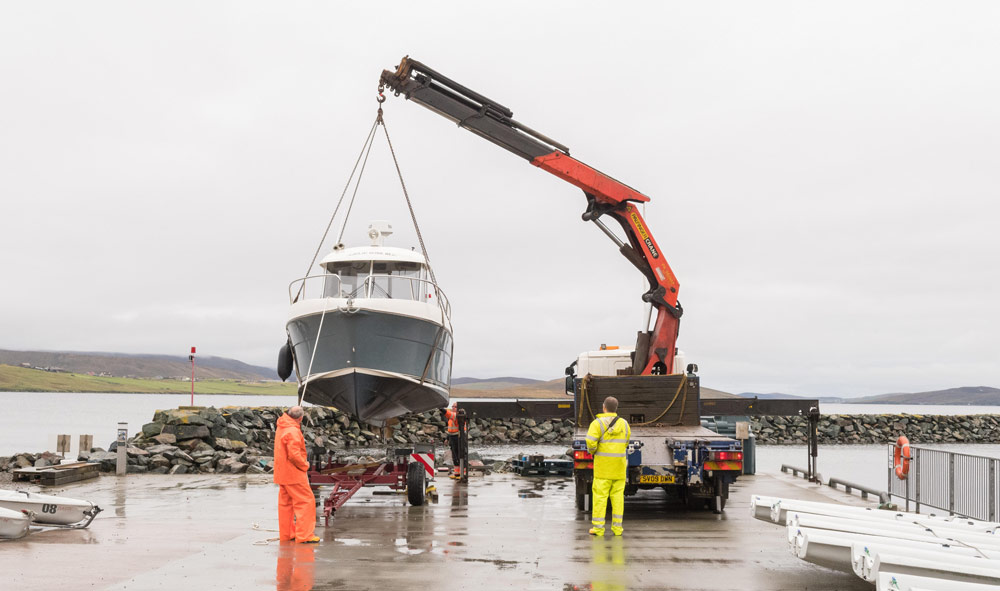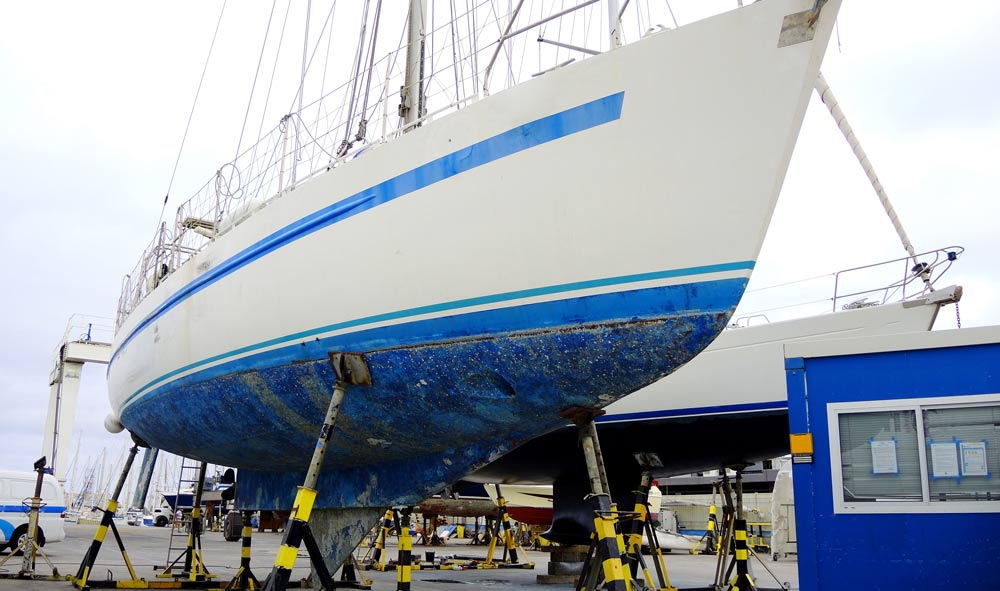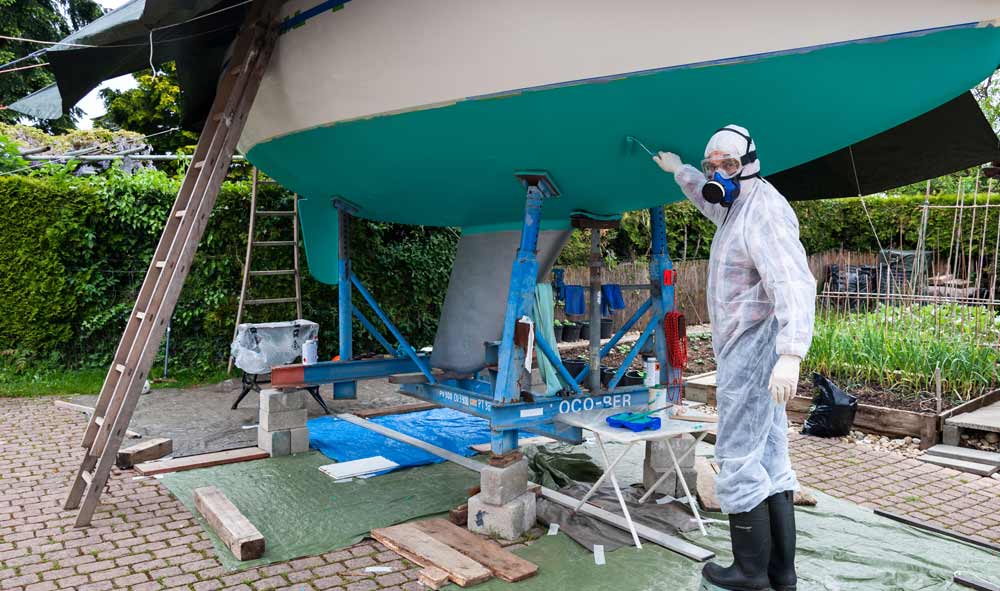Protect, Collect, Dispose
Protect Collect Dispose Week is back, and the industry needs your input to continue to explore the use of DIY antifouling

While antifouling does a great job of keeping our hulls clean, and even has some environmental benefits such as improving fuel efficiency and preventing the spread of invasive non-native species, it is toxic to aquatic life. Most antifouls are copper or zinc-based. Some of the compounds found in these antifouls can accumulate in marine organisms and can find their way into marine wildlife further up the food chain.
The majority of copper in antifouling enters the marine environment through leaching. However, concentrated amounts do enter the marine environment during the removal of antifouling paint, which occurs mostly by water blasting or mechanical scraping, and can form concentrated deposits on land and in the waters around our marinas, clubs, and centres.
All boat owners can play a vital role in minimising the risk to marine life from being inadvertently affected by antifoul, particularly during the maintenance stage of the process. It is hoped that the ‘Protect, Collect, Dispose’ campaign will raise awareness that remnants, such as copper scrapings and paint dust, travelling into the local sea and entering water courses during maintenance can be easily avoided if simple actions are taken by the boat owner.
There are of course, many benefits of applying antifoul paint and some of them are environmental. A hull which has been kept clean by antifoul for instance, reduces the drag on a boat and therefore improves the boat’s fuel efficiency. Another environmental advantage is that antifoul can reduce the inadvertent transportation of invasive marine species from one area to another – a biodiversity issue which can cause major disruption to our ecosystem. A well maintained antifoul coating also preserves a boat’s hull and increases the longevity of the vessel.
What is the ‘Protect, Collect, Dispose’ campaign all about?
Building on the successful, award-winning DIY Safe Antifouling programme launched in 2017, the British Coatings Federation (BCF), The Green Blue (RYA), British Marine and The Yacht Harbour Association (TYHA) are once again running the ‘Protect, Collect & Dispose’ campaign, focused on environmental best practice when antifouling yachts and boats.
The initiative sets out environmental best practice and is intended for DIY antifouling as well as for marinas and boatyards who offer professional antifouling services.
Just by following these simple steps boaters can significantly reduce boat users’ impact on the environment while antifouling.

Protect
The first step is to ‘Protect,’ lay down a tarpaulin or groundsheet before starting work on your boat. This inexpensive act can make a huge difference to the local wildlife. Not only does the tarpaulin protect the surface directly under the boat from paint drips or spills, but it also acts as an effective instrument to collect and dispose of loose debris and scrapings from the boat. Remember to protect yourself with Personal Protective Equipment (PPE) and work in a well-ventilated area to prevent inhalation of paint fumes and dust and to avoid paint coming into contact with your eyes, mouth, skin, and clothing.
Collect
This brings us onto the second step of the process, ‘Collect.’ The tarpaulin should make it easier to collect large remnants but using an industrial vacuum-cleaner linked to the paint scraper will minimise the amount of loose paint flakes and dust. Wet sanding will also help to prevent dry dust from escaping into the environment. Any water used when pressure washing the boat should also be collected, this can be achieved using portable bunding or a filtered washdown facility provided by some marinas, boatyards, or harbours.
Dispose
The final step is to efficiently ‘Dispose’ of antifouling waste. Always ensure that all hazardous waste such as paint pots, disposable gloves and paint scrapings are disposed of in hazardous waste bins. Don’t forget that Personal Protective Equipment, which should always be worn, may also need disposing of. There are of course, many benefits of applying antifoul paint, including a decrease in drag and less propeller restraint which results in fuel efficiency and lower emissions; in addition, antifoul paint reduces the transfer of invasive species. However, if all boat owners follow the best environmental practice described this will result in a greater overall positive impact to safeguard our waters.

Get involved and support the campaign
Across the campaign week, 21-25th October, the bodies associated with the environmental awareness initiative will be sharing handy tips on their social media pages and websites detailing how you can make your antifouling as sustainable as possible.
Don’t forget to follow The Green Blue, BCF, British Marine and TYHA on social media, LinkedIn and X and use #ProtectCollectDispose.
All boat owners can play a vital role in minimising the risk to marine life from being inadvertently affected by antifoul. You can help by sharing campaign posts on social media, and by downloading posters and infographics from The Green Blue/BCF websites and displaying them at your local club.
Ensuring the safe use of antifouling paints in a DIY/boat-owner scenario continues to be a major focus for antifouling paint manufacturers, the manufacturers are keen to understand the existing awareness of the hazards of antifouling paint, as well as the use of personal protective equipment and measures taken to prevent release of the paint during application and use. As such users of antifouling paints are requested to complete a short survey.

